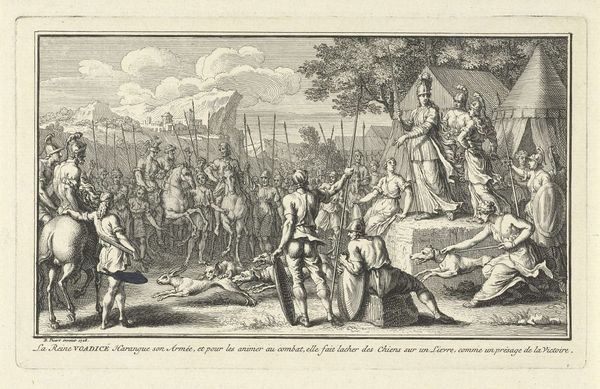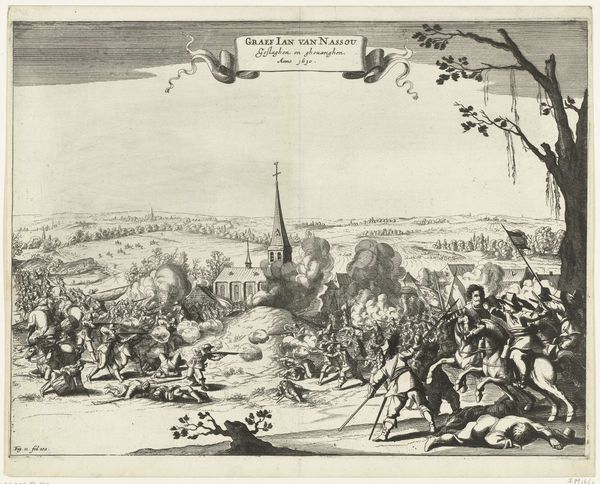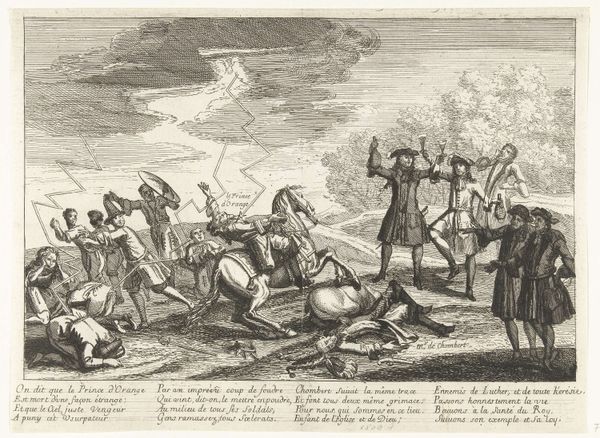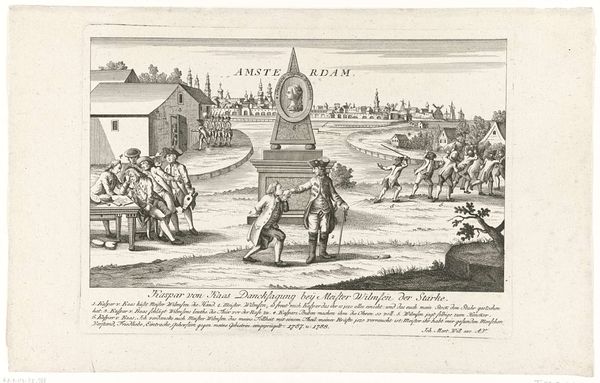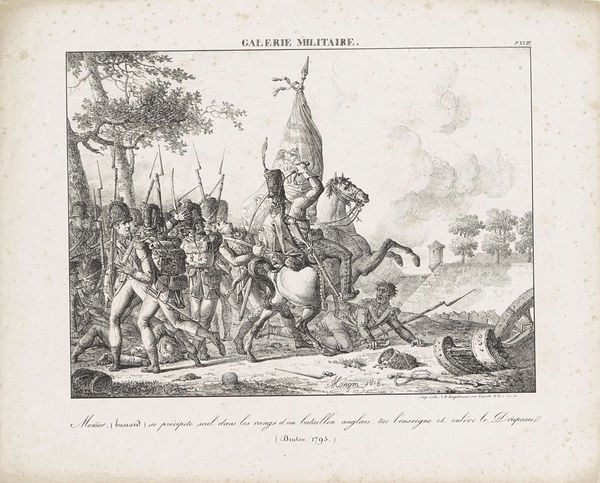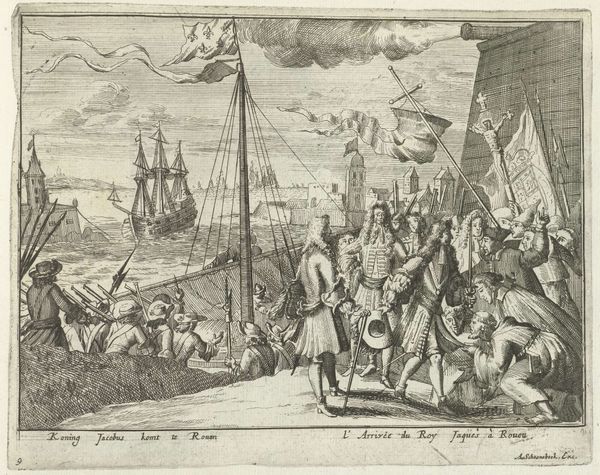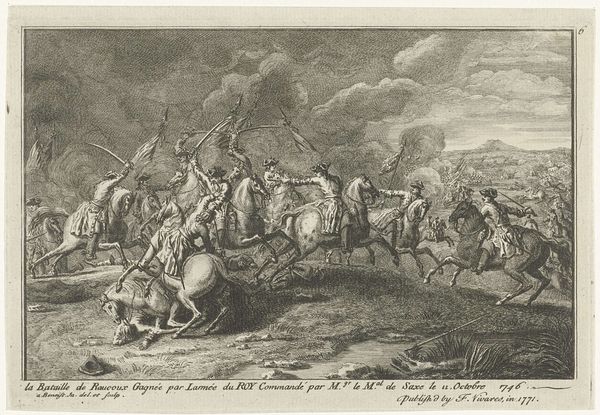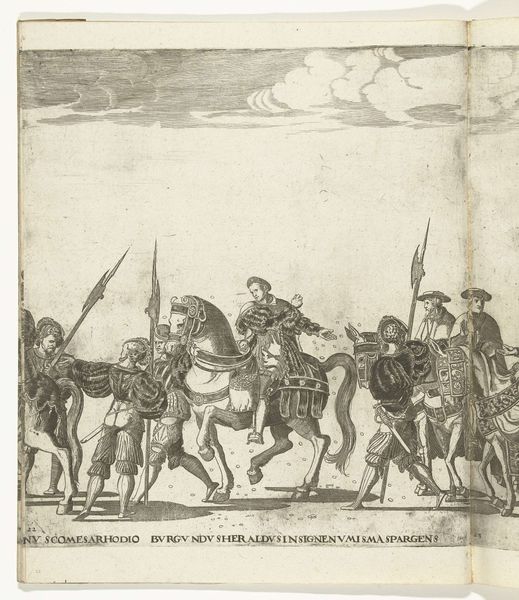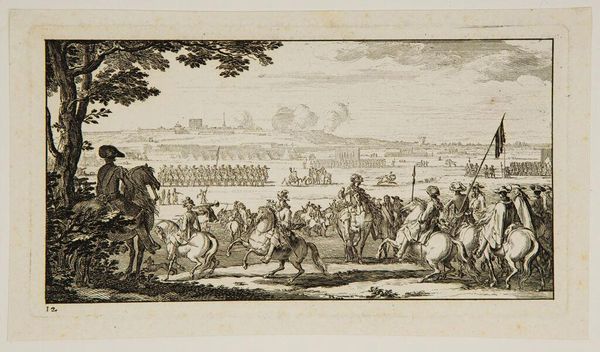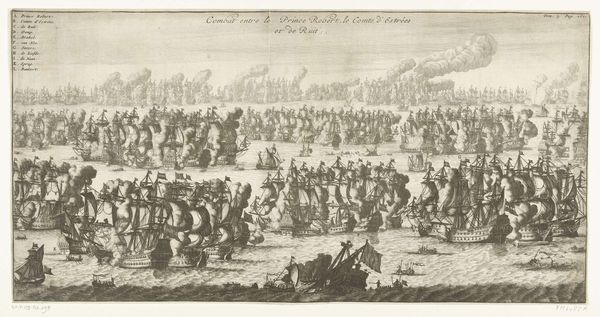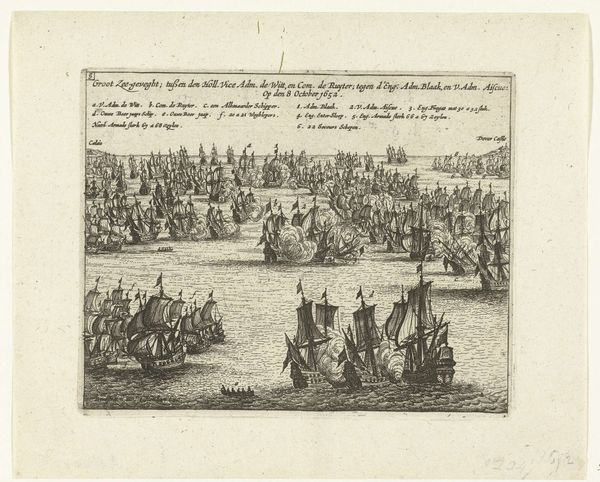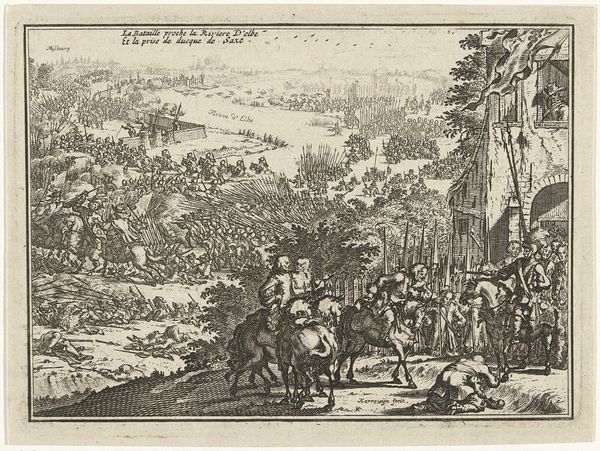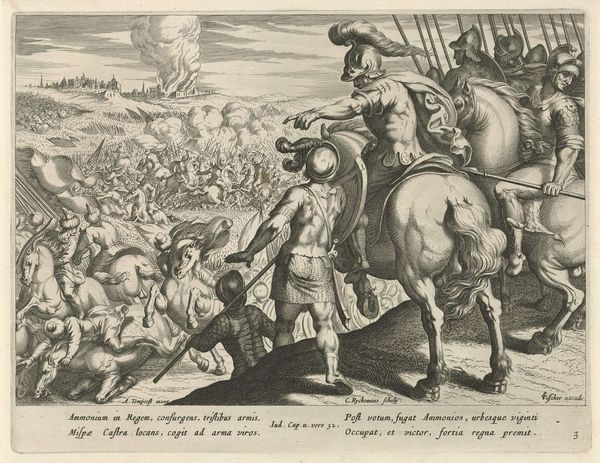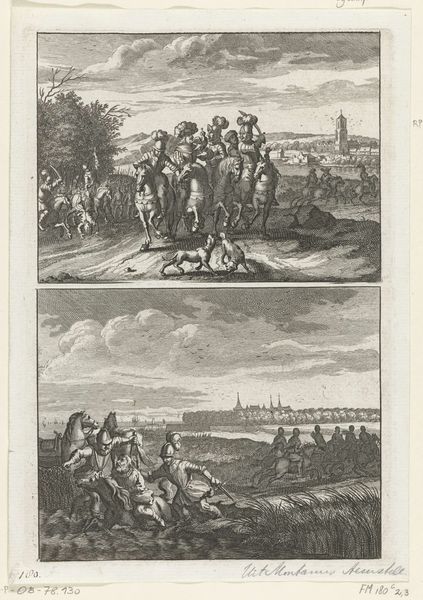
print, engraving
dutch-golden-age
caricature
landscape
cityscape
genre-painting
engraving
Dimensions: height 165 mm, width 201 mm
Copyright: Rijks Museum: Open Domain
Matthijs Pool created this etching, “IJsvermaak met apen,” around 1720, and it presents a winter scene populated by monkeys. The dominant visual symbol here is the use of monkeys in human roles, particularly engaged in leisure activities like ice-skating and riding in sleds. Historically, monkeys in art often served as symbols of mockery, imitation, or the base instincts of humanity. Think of the singerie motifs, where monkeys mimic human behavior to satirize society. This motif has roots stretching back to ancient Egypt, reappearing in medieval illuminated manuscripts and flourishing in the art of Pool’s time. The depiction of monkeys enjoying human pastimes can be seen as a commentary on human folly, suggesting that our pursuits are as absurd as these animals engaging in them. This kind of imagery touches a collective nerve, engaging viewers on a subconscious level with questions about the meaning and value of our own activities. The monkey as a symbol has a non-linear progression, resurfacing and evolving through different eras. Each time, it embodies a mix of cultural critique and psychological reflection, reminding us of our own complex relationship with our primal nature.
Comments
No comments
Be the first to comment and join the conversation on the ultimate creative platform.
